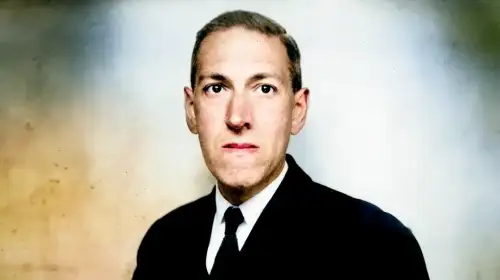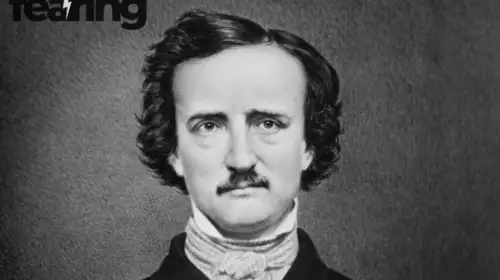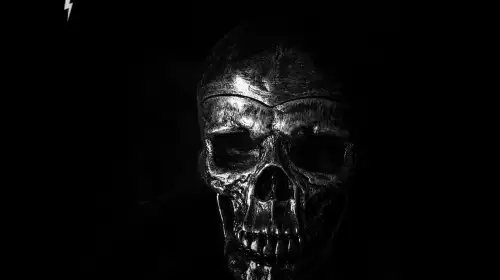Horror literature was never born from fantasy — it came from real fear. Every great horror writer lived in the shadow of something personal: loss, obsession, isolation, or guilt. Their works became a mirror of that darkness, teaching us that fear, when written with truth, can be beautiful.
As Stephen King once said, “We make up horrors to help us cope with the real ones.”
Mary Shelley The Mother Of Modern Horror
At only 18, Mary Shelley wrote Frankenstein — a novel that merged science, tragedy, and moral terror. The daughter of philosopher William Godwin and feminist pioneer Mary Wollstonecraft, she grew up surrounded by radical thought and personal loss.
After losing her first child and witnessing the isolation of genius in her husband, poet Percy Bysshe Shelley, she created Victor Frankenstein — a man consumed by ambition and guilt.
Shelley’s real-life grief and the Romantic era’s fascination with mortality transformed her novel into the blueprint of horror’s empathy.
“Beware; for I am fearless, and therefore powerful,” her monster declared — but it was really Shelley speaking through him.
Edgar Allan Poe The Poet Of Madness
Few writers lived their stories like Edgar Allan Poe. Born in 1809, Poe lost both parents before the age of three and spent his life haunted by poverty, addiction, and loss. His marriage to his young cousin Virginia Clemm ended in tragedy when she died of tuberculosis — a trauma that colored every poem and tale he wrote afterward.
In stories like The Tell-Tale Heart and The Fall of the House of Usher, Poe turned madness into art, giving fear rhythm and reason. He invented psychological horror — not of monsters, but of minds breaking.
Critic Dr. Lena Ortiz said, “Poe wrote fear not to frighten others but to survive himself.”
Bram Stoker The Gentleman Who Dreamed Of Vampires
An Irish civil servant turned writer, Bram Stoker published Dracula in 1897. What few know is that Stoker was chronically ill as a child, often bedridden and isolated. His fascination with vitality and disease shaped the vampire myth — eternal life as both curse and salvation.
Stoker’s own repression and fascination with power mirrored the Victorian tension between desire and morality. His vampire wasn’t only undead — he was everything polite society feared in itself.
H.P. Lovecraft The Architect Of Cosmic Fear
Howard Phillips Lovecraft was a recluse from Providence, Rhode Island, whose fears were vast and existential. Born in 1890, he suffered from anxiety, isolation, and family instability. His writings imagined a universe indifferent to humanity — gods so immense that their existence alone could drive people insane.
In stories like The Call of Cthulhu and At the Mountains of Madness, Lovecraft birthed cosmic horror — fear not of death, but of meaninglessness.
However, his personal xenophobia and elitism still shadow his legacy. Critics view Lovecraft’s monsters as reflections of his own social fears — a brilliant yet tormented man who found terror in diversity and the unknown.
Shirley Jackson The Voice Of Domestic Dread
Shirley Jackson, born in 1916, was a quiet revolutionary. Her suburban life seemed ordinary, but her fiction exposed the psychological suffocation of domestic life. In The Haunting of Hill House and We Have Always Lived in the Castle, she turned home into a haunted mind.
Plagued by anxiety, weight stigma, and isolation, Jackson channeled her emotional battles into controlled, elegant horror.
“I delight in what I fear,” she once wrote — a confession that became her creative compass.
Stephen King The Chronicler Of Human Evil
No one shaped modern horror more than Stephen King. Born in Maine in 1947, King grew up in financial hardship, often escaping reality through books and old horror films. At 26, while working as a teacher, he wrote Carrie — the story that launched his career and defined his style: ordinary people, extraordinary fear.
King’s personal struggles with addiction and near-fatal accidents often resurfaced in his work. Yet, his stories — It, The Shining, Pet Sematary — focus less on monsters and more on human fragility.
Literary scholar Dr. Evelyn Chase said, “King doesn’t write horror to frighten. He writes it to forgive.”
Clive Barker The Artist Of Flesh And Philosophy
British author and filmmaker Clive Barker brought sensuality and metaphysics to horror. His 1980s collections, Books of Blood, and the novel The Hellbound Heart introduced a terrifying but seductive vision of pain and pleasure intertwined.
Barker, who is openly gay, used horror to challenge repression and celebrate desire. His creatures, like the Cenobites, represent liberation through fear — an artistic rebellion against shame.
As Barker explained, “Horror is about boundaries — and how beautiful it is when they finally break.”
Anne Rice The Queen Of The Undead
Anne Rice redefined the vampire myth with Interview with the Vampire (1976), transforming it into a gothic confession. Raised in a strict Catholic household in New Orleans, Rice spent her life negotiating faith, grief, and identity.
After losing her daughter to illness, she wrote Louis — a vampire tormented by loss and immortality. Her novels are love letters to death itself, drenched in sensuality and sorrow.
Contemporary Voices Continuing The Legacy
Modern writers continue to evolve horror with personal and cultural narratives:
Silvia Moreno-Garcia merges Mexican history and feminism in Mexican Gothic.
Stephen Graham Jones uses Native identity to explore guilt and generational trauma.
Carmen Maria Machado reimagines horror through surrealism and gender politics.
T. Kingfisher and Mariana Enríquez revive Gothic dread through folklore and empathy.
Psychologist Dr. Sarah Bartlett remarks, “Today’s horror isn’t written in castles — it’s written in mirrors.”
Why The Lives Of Horror Writers Matter
Understanding the authors behind the stories reveals why their fiction resonates so deeply. These writers didn’t invent fear — they translated it. Every haunted house, every cursed soul, every monster began as a fragment of their own life.
Fear, for them, wasn’t an enemy. It was material — something to shape, sculpt, and survive.
As Mary Shelley proved two centuries ago, even in darkness, creation is an act of light.
FAQ
Q1: Which author is considered the founder of horror literature?
A1: Mary Shelley, with her 1818 novel Frankenstein, is widely recognized as the genre’s originator.
Q2: Why are horror writers often associated with tragedy?
A2: Because many drew inspiration from personal pain, loss, or isolation, channeling trauma into art.
Q3: Who defines modern horror today?
A3: Stephen King remains the benchmark, while writers like Silvia Moreno-Garcia and Stephen Graham Jones carry the torch forward.
Q4: What common trait unites all great horror authors?
A4: Empathy. Behind every monster lies a human truth about suffering or survival.
Q5: How do modern horror writers differ from their predecessors?
A5: They explore identity, politics, and emotion — expanding horror into psychological and social territory.
Sources
Cultural Analytics Journal 2025
The Guardian – Masters of Modern Horror





